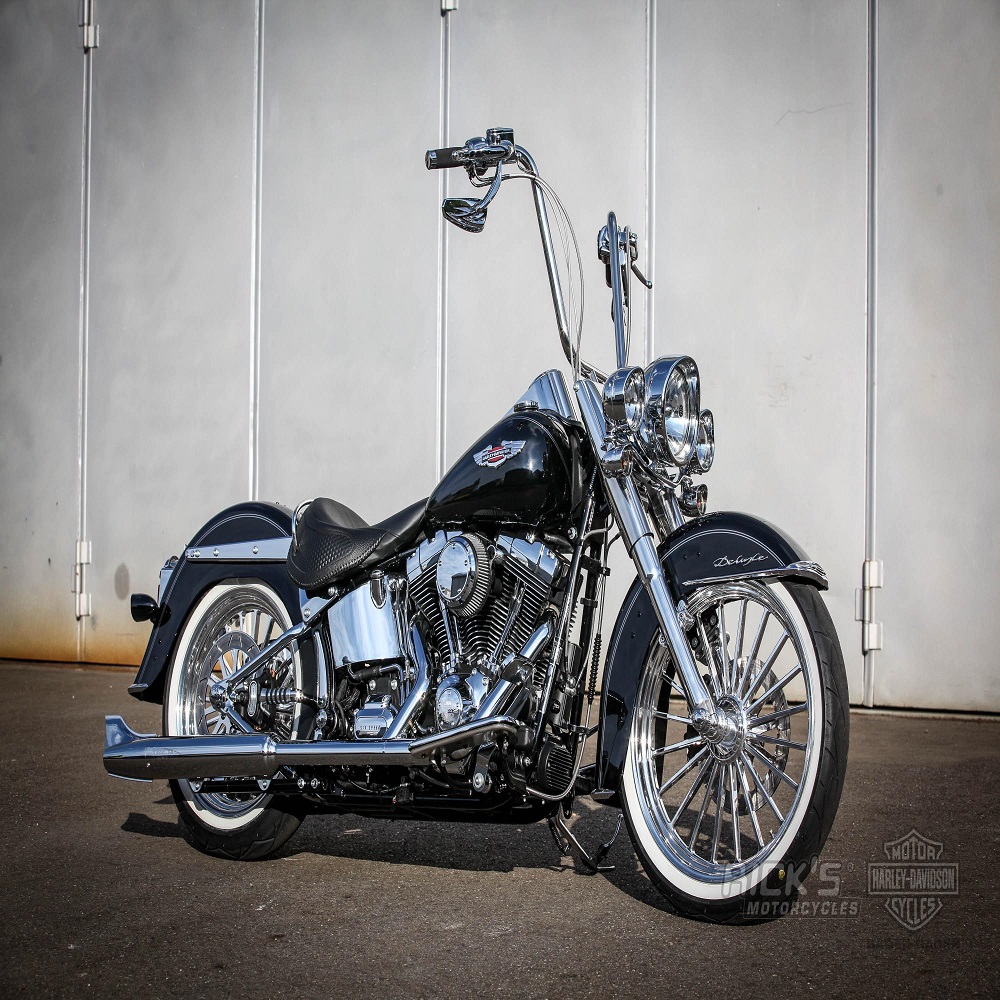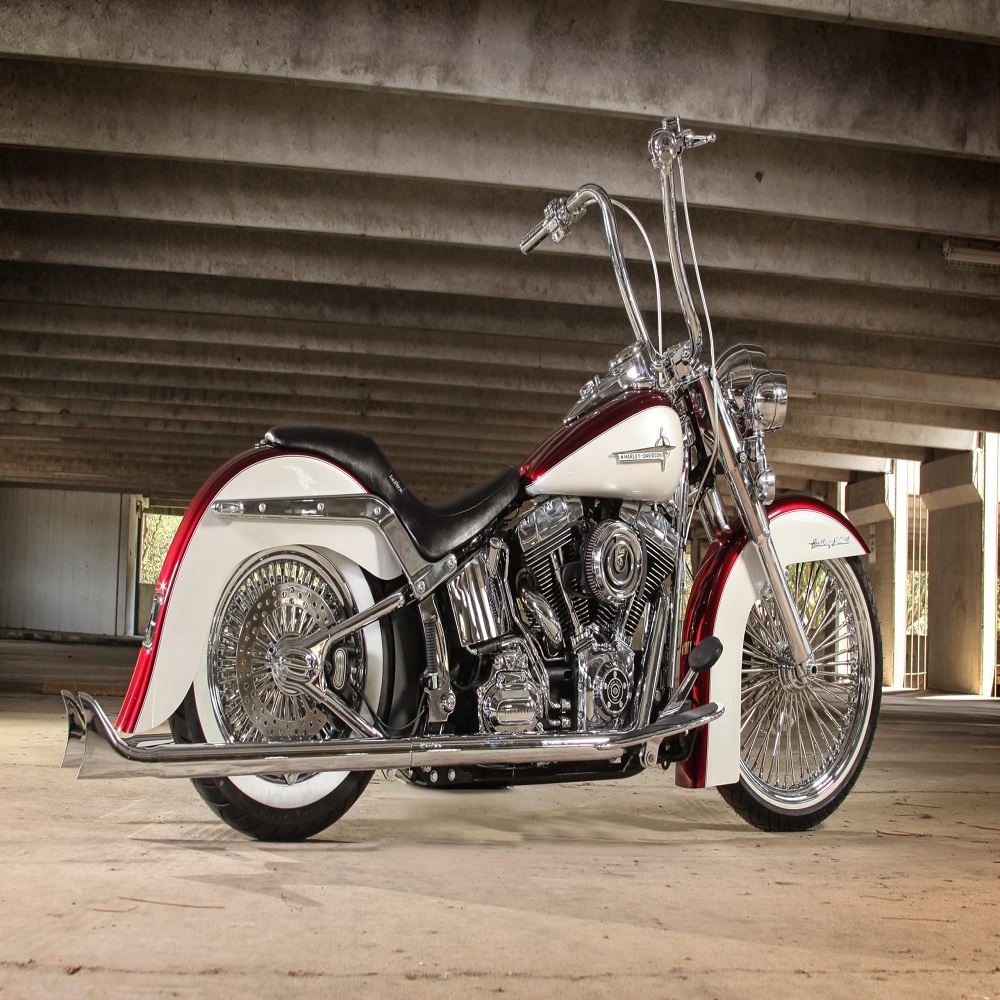Introduction
In the realm of motorcycle culture, the influence of the Cholo aesthetic and community stands out prominently, blending distinctive elements of style, identity, and community spirit. This phenomenon isn’t merely about fashion or a particular look; it encompasses a rich tapestry of history, social dynamics, and personal expression that has deeply permeated motorcycle communities across the United States and beyond.
Historical Roots
The origins of the Cholo influence on motorcycle culture can be traced back to the mid-20th century, particularly in California. Chicano and Mexican-American communities, facing social and economic challenges, found solidarity and expression through various subcultures, including motorcycle clubs. These clubs provided a sense of belonging and brotherhood amidst societal marginalization.
Aesthetic and Style
1. Clothing:
- Bandanas and Headwear: Bandanas, often worn under helmets or tied around the head, serve both practical and stylistic purposes, echoing Cholo gang attire where they signify allegiance and identity.
- Denim and Leather: Riders often sport denim jackets adorned with patches and insignia, akin to Cholo street fashion where denim jackets are customized with personalized artwork and symbols. Leather vests also feature prominently, adorned with club logos and individualized designs.
2. Tattoos and Body Art:
- Tattoos play a significant role in both Cholo and motorcycle club culture, serving as visual markers of identity, allegiance, and personal narratives. Iconic imagery such as skulls, roses, religious motifs, and names often find their place on riders’ bodies, reflecting a blend of cultural heritage and individual expression.
3. Motorcycle Customization:
- Lowriders and Custom Paint Jobs: The Cholo influence brings a penchant for lowrider motorcycles, characterized by lowered suspensions and intricate paint jobs that often incorporate cultural symbols and vibrant colors. This customization extends beyond aesthetics to convey personal and cultural pride.
Community and Identity
1. Brotherhood and Solidarity:
- Motorcycle clubs influenced by Cholo culture emphasize camaraderie, loyalty, and mutual support. Just as Cholo gangs foster tight-knit bonds among members, motorcycle clubs build community through shared interests, rides, and gatherings.
2. Cultural Pride and Resistance:
- Embracing Cholo aesthetics within motorcycle culture represents a form of cultural assertion and resistance against mainstream norms. It celebrates Chicano heritage and challenges stereotypes, affirming a distinct identity within the broader motorcycle community.
Challenges and Resilience
Despite its cultural significance and community cohesion, the Cholo-influenced motorcycle culture faces challenges. Stereotyping and prejudice based on appearance and association persist, often overshadowing the positive aspects of camaraderie and cultural pride. Nevertheless, riders continue to uphold their traditions and values, fostering resilience and solidarity within their communities.
Contemporary Impact and Global Reach
The influence of Cholo-inspired motorcycle culture extends far beyond its origins in California. From urban centers to rural towns, and across international borders, enthusiasts embrace the aesthetic and values that unite them. Events like bike shows, charity rides, and cultural festivals serve as platforms for showcasing creativity, fostering friendships, and promoting awareness of Cholo heritage.
Origins and Cultural Significance
The term “cholo” has a complex history, originally a derogatory label used to describe mixed-race individuals of Indigenous and Spanish descent in Latin America. Over time, however, the term has been reclaimed as a badge of honor and cultural identity within Chicano communities, particularly in the United States. Cholos are known for their strong cultural pride, distinctive dress code, and deep connection to family and community.
In the realm of motorcycles, cholos have taken elements from their rich cultural heritage and fused them with the freedom and rebellion associated with biking culture. This blend manifests in everything from custom bike modifications to the attire worn by riders, creating a distinct visual language that speaks to their roots and shared experiences.
 Custom Bikes and Lowrider Influence
Custom Bikes and Lowrider Influence
Cholo motorcycle culture borrows heavily from the lowrider tradition, known for its meticulous attention to detail, flashy customization, and hydraulic suspension systems that allow cars to bounce and hop. This influence translates into motorcycles that are heavily personalized, often featuring vibrant paint jobs adorned with intricate pinstriping, chrome accents, and airbrushed murals depicting Chicano iconography—such as Aztec symbols, religious imagery, or tributes to loved ones.
Mechanical modifications are also prevalent, with cholos often opting for louder exhaust systems, custom handlebars, and unique seating arrangements to create a ride that not only looks but sounds and feels distinct. These bikes become rolling works of art, reflecting the rider’s personality and cultural heritage.
Fashion and Attire
Fashion plays a significant role in defining the cholo biker aesthetic. Riders often sport a mix of traditional cholo attire—like Pendleton shirts, khaki pants, Chuck Taylor sneakers, and crisp white t-shirts—with motorcycle gear like leather jackets adorned with patches and club logos. Bandanas, often worn as headbands, and tattoos displaying Chicano art further accentuate the look, symbolizing loyalty, pride, and personal stories.
Community and Brotherhood
At its core, cholo motorcycle culture is about community and brotherhood. Riding clubs, known as clubs de motociclistas or motorcycle clubs, serve as a second family for many cholos, providing a sense of belonging and support beyond blood ties. These clubs organize rides, charity events, and gatherings that celebrate Chicano culture and reinforce the values of respect, loyalty, and solidarity.
The bonds formed within these clubs transcend mere riding companionship; they become a source of strength and resilience, especially in facing social and economic challenges faced by many in Chicano communities. Through shared experiences on the open road, members forge lifelong friendships and a collective identity that is both rebellious and deeply rooted in tradition.
Cultural Impact and Recognition
The cholo motorcycle culture has gained wider recognition in recent years, with documentaries, films, and social media platforms showcasing the unique blend of Chicano pride and biking passion. This exposure has helped to break down stereotypes and bring a greater understanding of the depth and richness of the culture to a broader audience.
The Role of Music and Art
Music and art are integral components of cholo motorcycle culture, further enriching its unique identity. Lowrider oldies, Chicano rap, and Tejano music often serve as the soundtrack for gatherings and rides, reflecting the community’s musical preferences and historical roots. These genres not only entertain but also narrate stories of struggle, love. And triumph, resonating deeply with the riders and their experiences.
Artistic expressions extend beyond bike customization. Tattoos, in particular, are a canvas for personal and cultural narratives, with images of the Virgen de Guadalupe, sugar skulls, and Aztec warriors commonly inked onto riders’ skin. Graffiti, another prominent art form within the culture, decorates the walls of neighborhoods and clubhouses, serving as a visual declaration of presence and pride.
Women in Cholo Motorcycle Culture
Within this traditionally male-dominated subculture, women, known as cholas, are increasingly claiming their space and making their presence felt. Female riders and club members embody the same spirit of defiance and cultural pride. Often adding their own flair to the cholo aesthetic. They challenge gender norms by riding their own bikes, leading clubs, and contributing to the community’s artistic expressions. Chola riders demonstrate that the love for motorcycles and the commitment to cultural heritage are not exclusive to one gender. Fostering a more inclusive and diverse motorcycle community.
Cholo Bikers and Social Activism
Beyond their passion for motorcycles and cultural preservation, cholos are also engaged in social activism and community service. Many clubs organize charity rides, food drives, and educational programs aimed at supporting local communities and uplifting underprivileged youth. By leveraging their collective strength and visibility, they address issues such as gang violence prevention, educational disparities. And cultural awareness, demonstrating that their subculture is not just about aesthetics but also about positively impacting society.
Conclusion
The Cholo influence on motorcycle style and community represents more than a trend—it embodies a resilient cultural fusion rooted in history, identity, and solidarity. Through distinctive fashion, personalized bikes, and a strong sense of camaraderie. Riders continue to carve out spaces that celebrate their heritage while challenging stereotypes. As motorcycle culture evolves. The Cholo influence stands as a testament to the enduring power of community and cultural pride on two wheels.

Leave a Reply